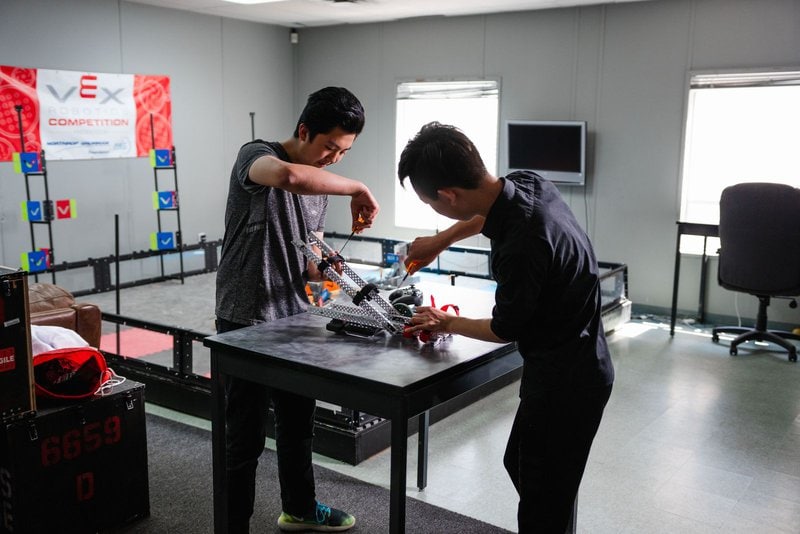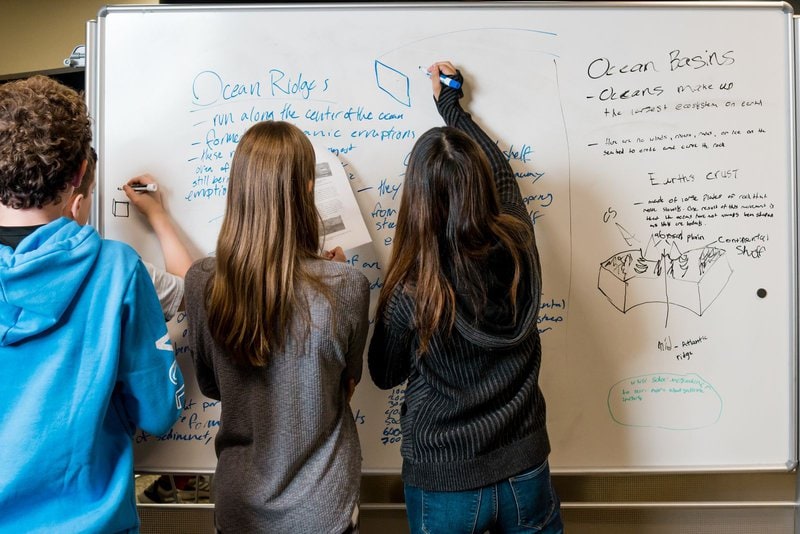What does it mean to be Imaginal in junior high?
This was a question I found myself pondering when I began the year.
Imaginal learning looks at the idea of training students for the unknown future and having them become the leaders and creators of that future. The question must be asked, how is it possible to look beyond the now when junior high students struggle to often see beyond themselves and their immediate situation.
As I began to investigate this my search brought me to one of my favourite books from my early teaching years, Drive by Daniel Pink. The book does a magnificent job of exploring the world of motivation (a link to a summary video will be posted below). In the book, Pink draws a direct relationship between passion and motivation, the idea that purpose drives people to do great things.
So again I ask the question, what does it mean to be Imaginal in junior high? How can students be expected to create the future? The answer is simple yet extremely complex; students need a purpose to become Imaginal.
How is it possible for junior highs to align with a school acceptable idea of purpose? This is where the process gets complex but in my research, it has become obvious that there are three main points that jump out and they are:
- Students want to bring change,
- Students have pre-existing passions, and
- Students desire connection.
Student Drive for Social Justice
Students are passionate about bringing change to the world. Whether through social justice or some other avenue, most students going through the wonderful changes associated with puberty have a desire for social justice. It is incredible how many times a day I hear students saying, “that is not fair.” Students have a passion to see everything be fair in a very unfair world. This passion has played a large role in the rising of leftist ideas within youth culture today. So, the question must be asked, how can this be channelled into empowering students? The answer was simple, it is time to start the revolution! Yes, you heard that right, it is time that we begin to empower students to stand up and yell for change.
For anyone who has tried to stand against a stubborn child, they know the pain that this is. Once a child has locked in, it becomes near impossible to sway them. What is the problem with this? Well, in my own home, it usually drives me crazy because it gets in the way of my plans. What if we took that stubbornness, that passion, and used it to bring positive change? There are many amazing examples that we are currently studying in our service option, of young men or women that took their stubborn desire for change and channelled it into world-changing ideas that are framing our tomorrow. Boyan Slat is an amazing example of this. While scuba diving with his family he was overwhelmed with the amount of garbage that was floating around. After thinking about it, Slat decided that he was going to clean the oceans up. Let’s be realistic here, if a 16-year-old came up to me and declared that they were going to clean up the ocean’s garbage, I would be pretty skeptical. Slat, though, did not care what anyone thought. Instead he persevered and, as of early this year, is beginning the process of having his massive ocean cleaning machines dragged into place to begin the ocean clean up. This all started with a desire for change.
The lie that we often tell ourselves is that junior highs are lost and need to be left to their devices (both literally and figuratively) but this is not true. The change in our world needs to be driven by them. This is why our theme for this school year is ‘Join the Revolution’. We are hoping to inspire students to become the change. In high school the theme is ‘Start the Revolution’, an in-depth process of equipping them to become world changers. The intention is to channel the gift that biology has given them and use it to begin envisioning a future where their vision/ideas are being considered.

Student Passion
As a school, one of our core tenants is helping students explore their Big Why, and what their purpose is for having been created. Helping students find their Big Why or passion is a big component of our design program in junior high. As you may know, each year, we run an Imaginal Design competition in the school, which pits students against one another in a battle of innovation. Throughout the year students learn the foundational tools of seeing the future and creating for it and this culminates in the year end competition. During the competition last year I was shocked at the high level of innovation and creativity demonstrated by students. What was most interesting was the high level of passion that the students had for their ideas. The projects ran the gamut including sports technology, fashion, architecture and many other inspiring ideas for improving our future. When discussing projects with students I was shocked at the planning process that each student had used, utilizing the PDSA cycle. Furthermore, many of the students described the trend cycle and how they foresaw their project fitting into future trends. The level of passion through all the explanations was inspirational. I could not believe that a group of junior high students could have so much fun creating! The driving force behind this is passion. Junior high students are capable of incredible things, including creating the future, when they are aligned with their passions and interests.
Student Relationship
Five years ago I started my first day as a junior high teacher. I remember the terrifying feeling I had walking into the classroom. How do you connect with them? Having taught in elementary my whole career up to that point I was used to having fun, being goofy and getting to know students on a personal level. I was concerned that in junior high the process of connecting would be different…was I ever wrong! After a week of being in the junior high classroom it became apparent there was no great divide between elementary and junior high – they are all kids, and they wanted to know that they were cared for. This is not necessarily a ‘friend’ type of relationship but instead a demonstration of care that demonstrates respect for who they are. Students have a strong value for the connection between themselves and their mentor adults. When that connection is present they are more comfortable and better able to process and engage in learning. This mentorship relationship provides a place where values and deeper thinking skills can be imparted from the teacher to the student.

Our teachers have a high value for that student connection. It always surprises me the level of engagement that teachers have and their ability to connect with students beyond just conventional classroom time. This takes on the form of clubs, sports teams, trips and most importantly fun moments and joking that occurs around the school. Before the transition to home-based learning a few months ago, I was sitting in the hall at lunch on supervision and took in teacher after teacher connecting with students. One teacher was working with a group of grade 12 students on math, I could see another teacher in the gym shooting hoops, and Mrs. Simpson, our Music teacher, was having lunch with a group of students in the music room. It was evident that the teachers were working hard to connect with students and that the students were loving it.
Imaginal Students
 It is clear that something special is happening at Master’s. Student engagement is high, teachers are actively engaged in learning and the culture of leadership development is thriving. Even as we were forced to transition to an online learning situation, we saw student after student step up to help with creating our new online community. We have a group of grade 12 students helping organize online lunches for students to connect in, we have had students offering to host morning announcements, and had numerous students step up and help out with our Easter Chapel. It has been so encouraging to see students persevere and engage. It demonstrates the evidence of a community that has thrived and the emergence of a foundational idea that school has a deeper purpose and importance than just child torture. Instead, school is about developing them to be prepared for their future.
It is clear that something special is happening at Master’s. Student engagement is high, teachers are actively engaged in learning and the culture of leadership development is thriving. Even as we were forced to transition to an online learning situation, we saw student after student step up to help with creating our new online community. We have a group of grade 12 students helping organize online lunches for students to connect in, we have had students offering to host morning announcements, and had numerous students step up and help out with our Easter Chapel. It has been so encouraging to see students persevere and engage. It demonstrates the evidence of a community that has thrived and the emergence of a foundational idea that school has a deeper purpose and importance than just child torture. Instead, school is about developing them to be prepared for their future.


